I got to pay an impromptu visit the Clydesmill Fire Station. Formerly the Cambuslang Fire Station, the station was moved a few hundred meters down the road, to it's present location in 2011. Here's my photo's of my visit and an informational video on the High Volume Pump Prime Mover pod that is present at the station!
A massive thank you to the crews at Clydesmill Fire station, who graciously gave their time to show me round the appliances, despite the very short notice I could give!
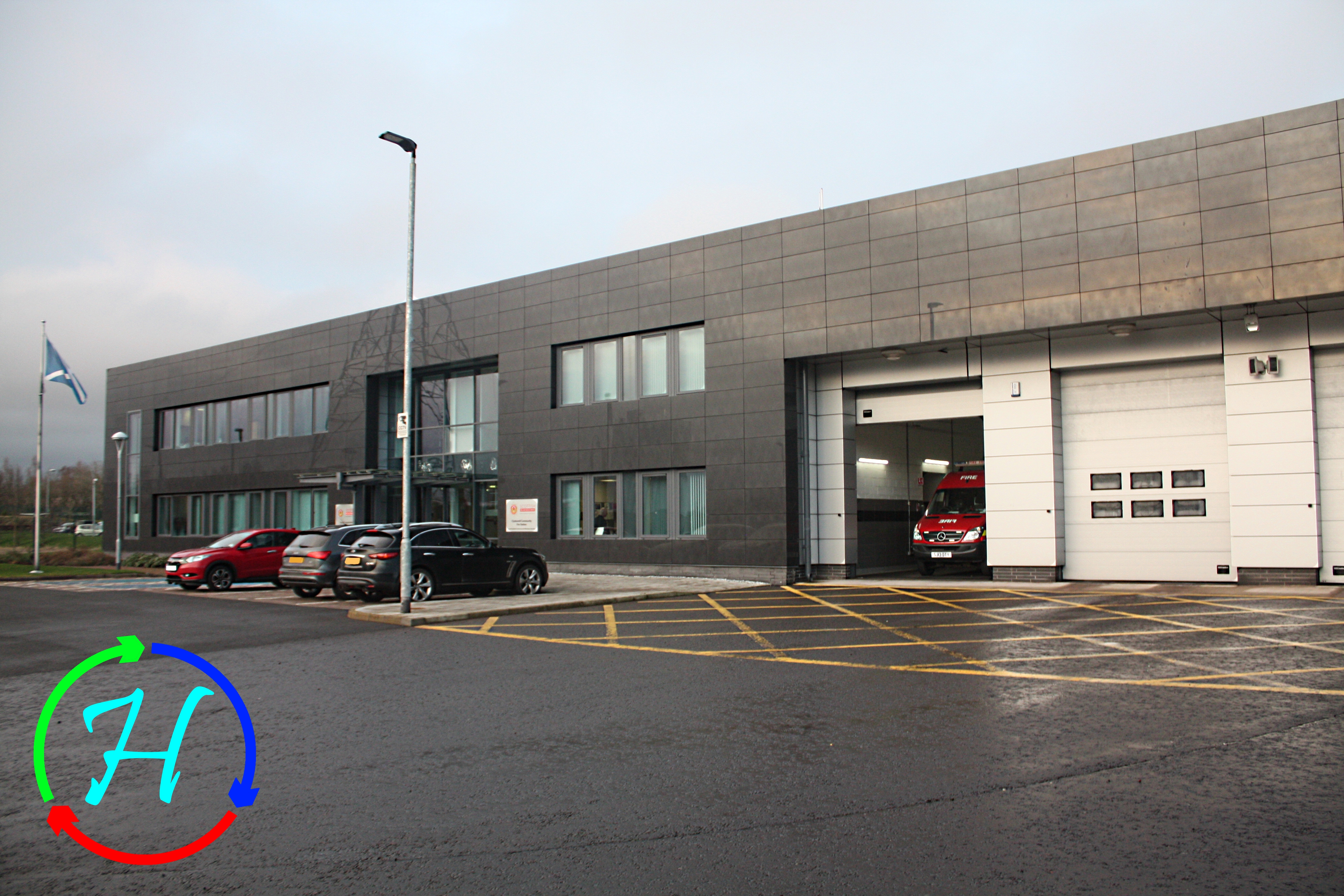
The sleek and modern front of the Clydesmill firestation, makes it looks almost unrecognisable when compared to the many "classic" fire stations that still populate Scotland! Built in 2011, this new facility is located a couple of hundred yards away from the old Cambuslang fire station.
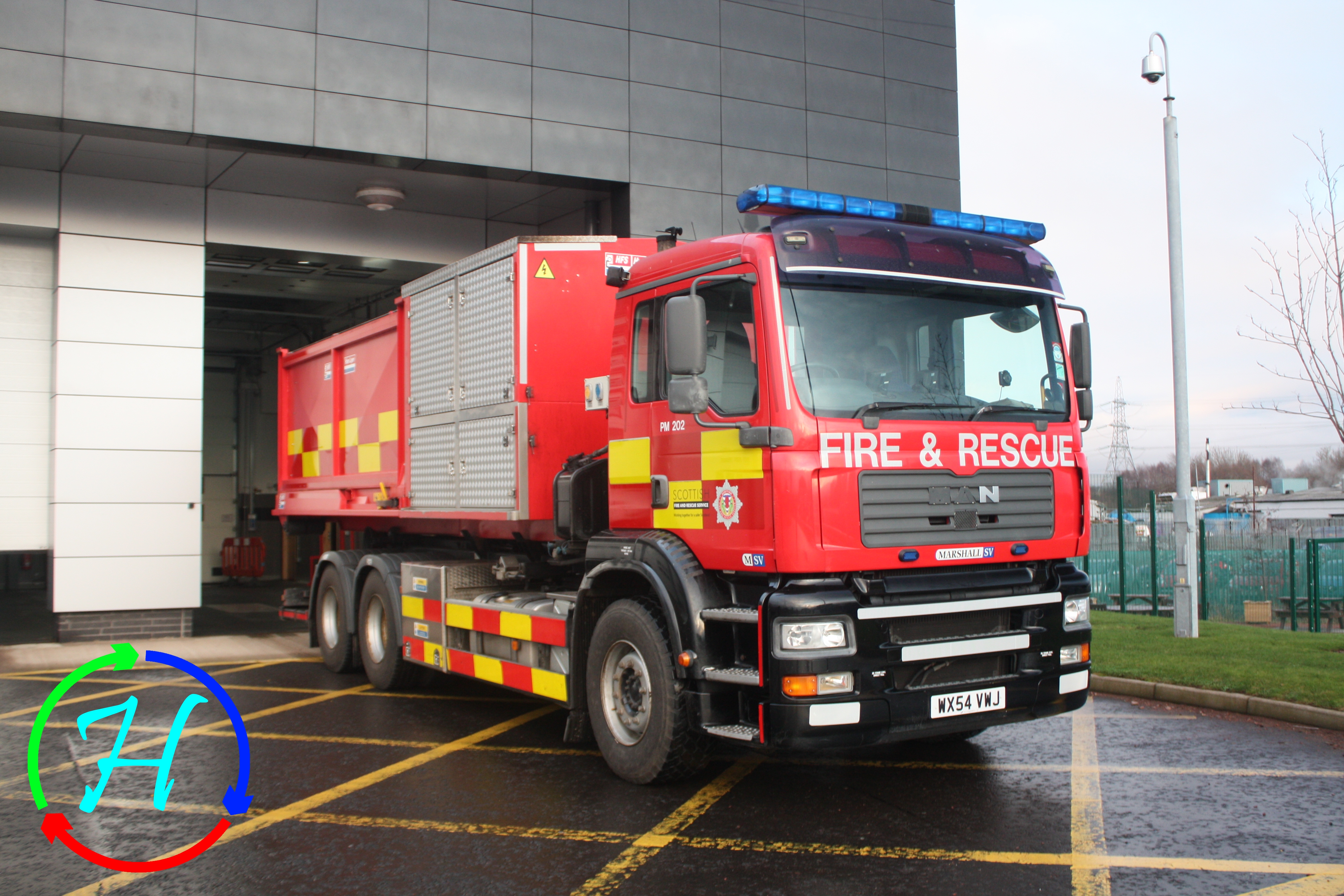
WX54 VMJ - MAN - Prime Mover - P05H1
A Prime Mover is a type of firefighting vehicle that, rather than being loaded with a predetrmined kit, loads pods for different jobs. This gives the unit flexibility to respond to many emergency scenarios.
Various pods exist: HVP, BASU, HazMat, Environmental Protection, USAR. In this photo, the Prime Mover is equipped with the High Volume Pump pod.
Although a interesting system, the Prime Mover only gets called out to serious incidents, most of which turn out to be false alarms. Apparently, this VMJ only gets deployed in anger approximately once a year!
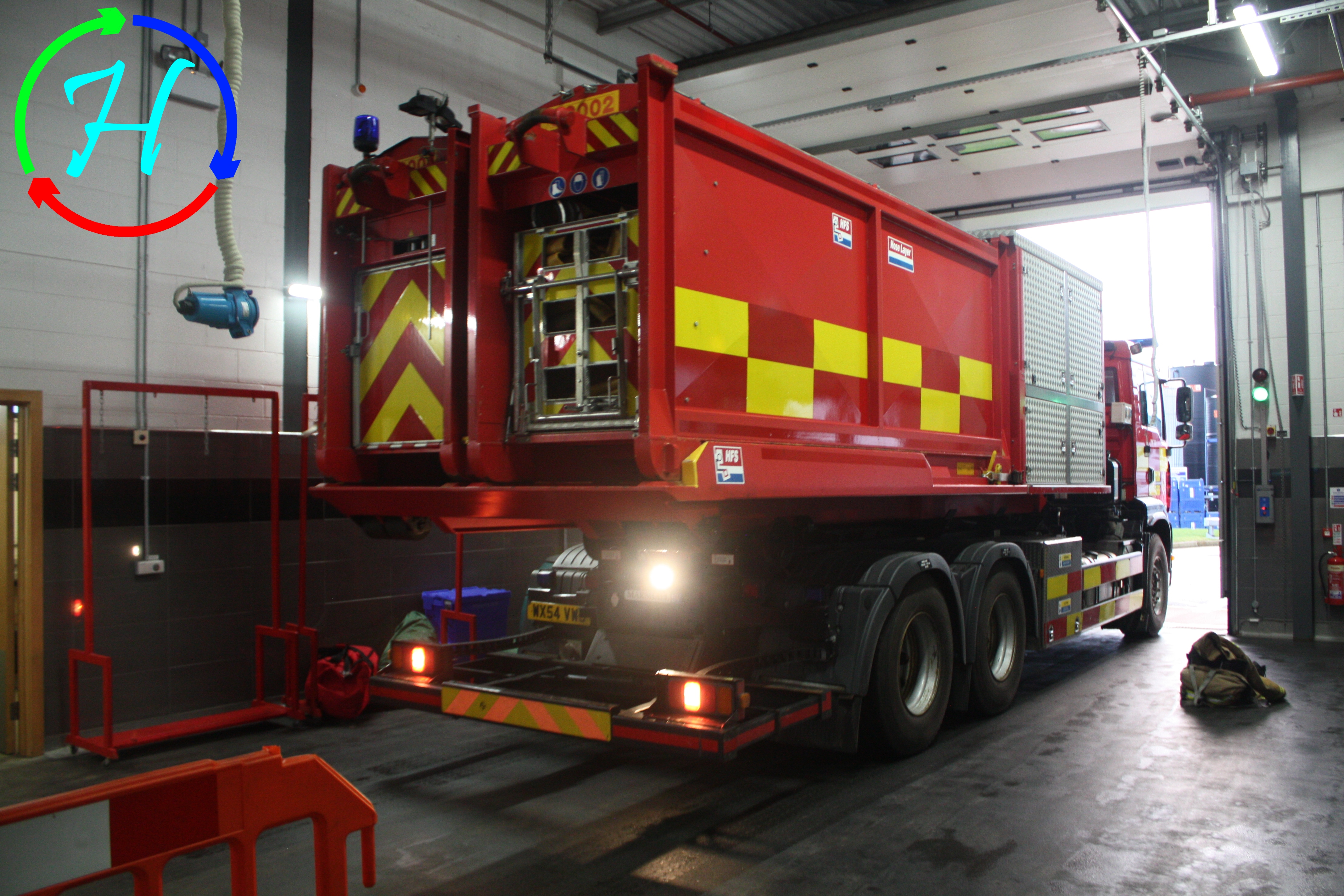
High Volume Pump Pod
In this rear shot, you can see the modular nature of the HVP pod. Once dismounted, the Prime Mover can swing around to the rear of the HVP pod, as use the hooks to pull off the two sub modules. There are 3 parts to the HVP pod. At the front, behind the silver doors, is the high volume pump, which can shift a whopping 8,000 Liters of water a minute (compared to a normal pumps ~1700 Lpm)!
The two sub-modules at the rear contain the large diameter hosing (can be up to 70cm in diameter) necessary to transport such a high volume of water! 1km of hose is available in the one pod, so when all 3 HVP pods are used together, it can shift tons of water over 3 KM to where it is needed!
Because of the ability to move huge volumes of water over large distances, HVP's can be very effective tools in dealing with flooded areas - something I never really thought about!
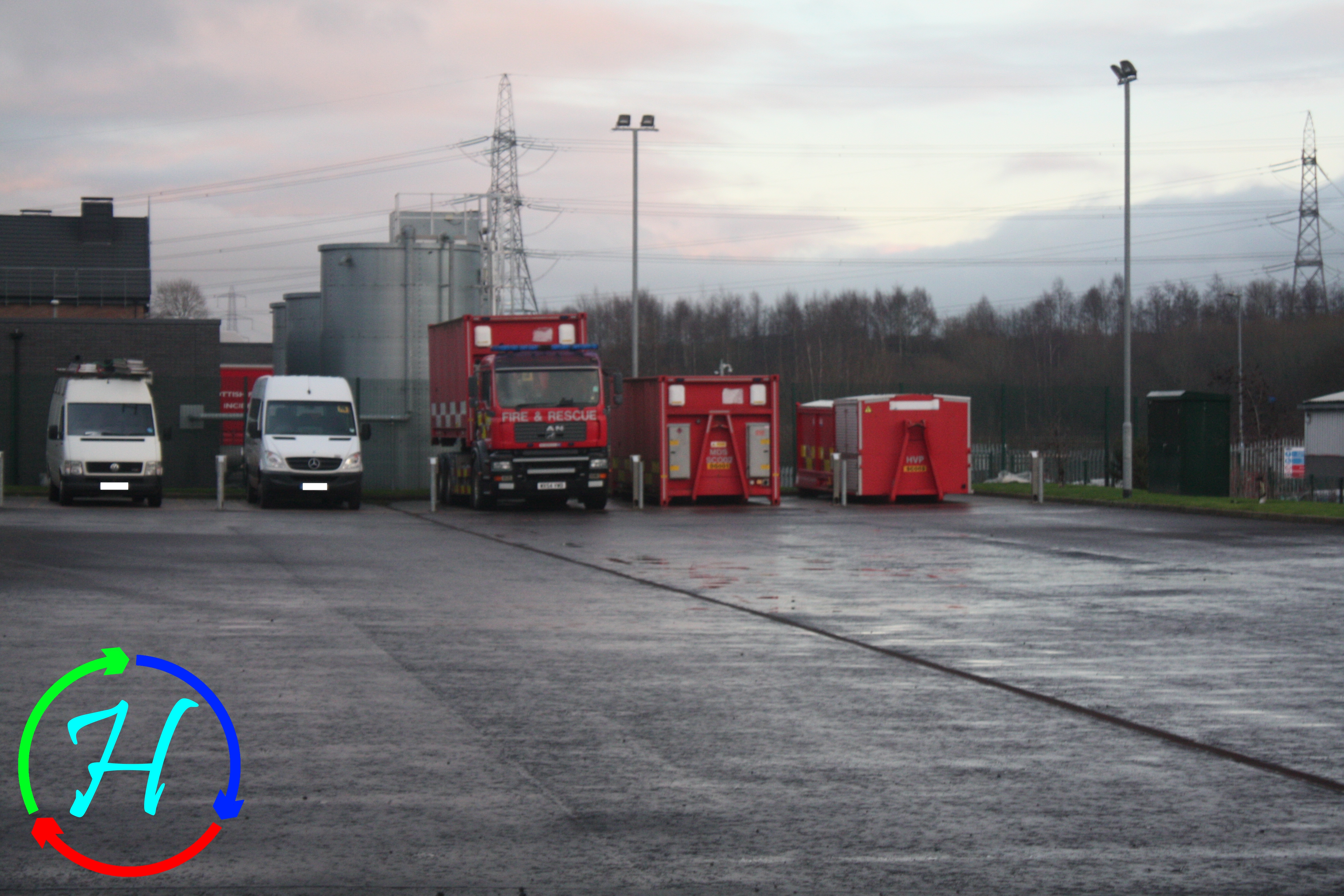
WX54 VMD - MAN - Prime Mover - S03H1
Renfrew's prime mover sits alongside Clydesmill's pods. Still operated by crews from Renfrew, quite what it was doing parked up at Clydesmill was not known when I visited.
Several pods are available at Clydesmill:
3 High Volume Pump Pods
Environmental Protection - For dealing with HAZMAT incidents
Breathing Air Support - A mobile compressor that allows crews to replenish their air canisters at the scene of a major incident.
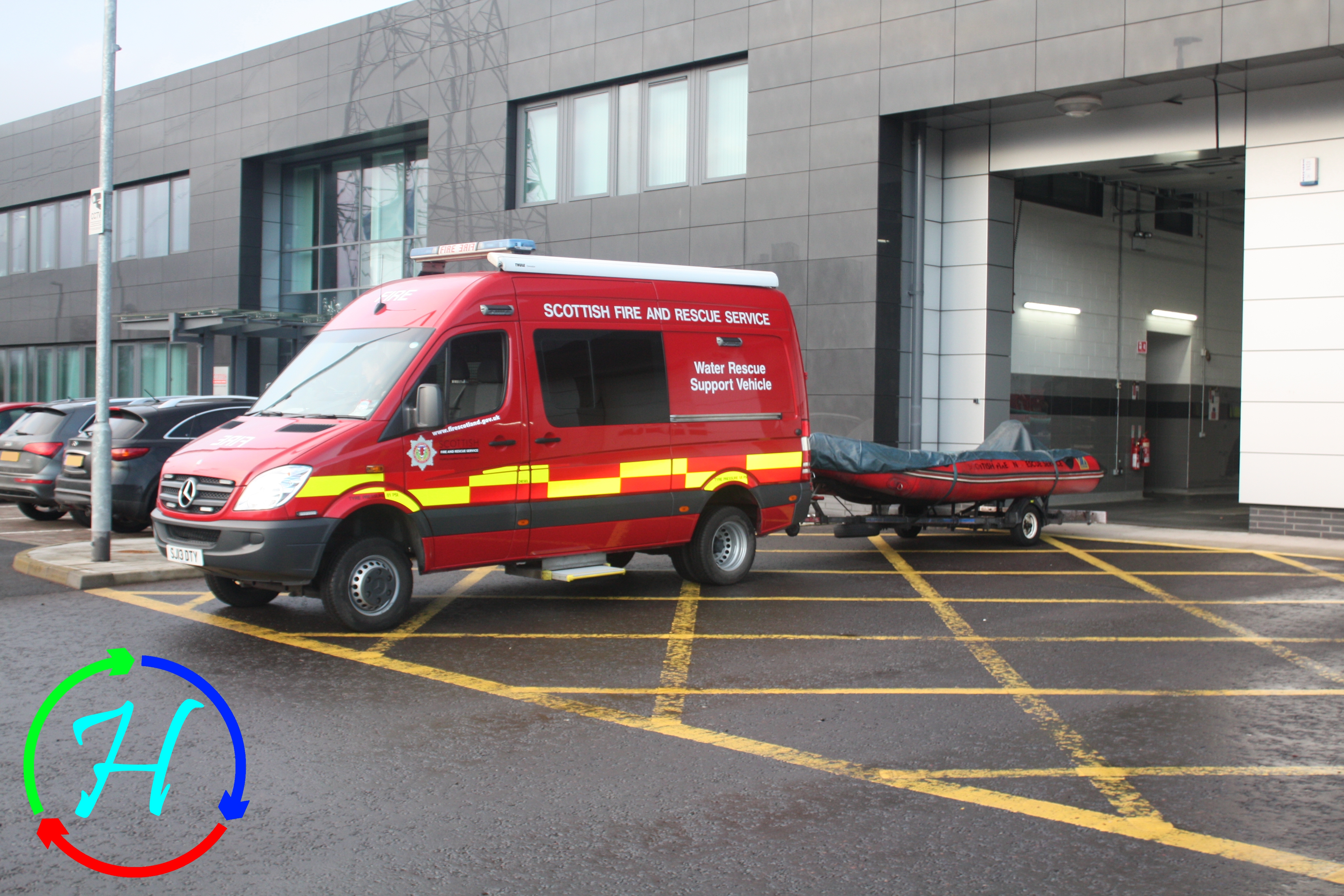
SJ13 DTY - Mercedes Sprinter - Water Rescue - P05N1
Clydesmill Fire station is also home to another specialist unit: the Water Rescue Vehicle. Technically a Supplementary Equipment Vehicle, the unit can fit either role. For Water Rescue, it has a variety of equipment, including a RHIB boat on a trailer (More info below).
As a SEV (Supplementary Equipment Vehicle) it can be used to transport extra equipment to the the scene of an incident. With a seating capacity of 6, it can also transport a relatively large unit of extra personnel if needed.

SJ13 DTY - Mercedes Sprinter - Water Rescue - P05N1
A look into the back of the equipment bay of the Water Rescue Unit. Almost every inch of space gets used for something! The WRU is equipped for 2 kinds of rescue: shallow water (knee deep) and deep water.
For shallow water rescue, such as evacuating residents from a flooded area, the WRU has it's boat, and inflatable rescue path that extend for 10m, and a pole to ensure firefighters will not accidentally slip into deeper water. This is important because when flash flooding hits a sewer area, the drain covers can quite easily lift up and move away, leaving a dangerously deep hole for someone to fall down!
For deep water rescue, the unit is equipped with flotation devices to aid rescue. It has floatation assists, that allow firefighters to swim through deep water, and also emergency flotation devices, which will save someone from drowning, but doesn't allow you to swim.
The WRU is actually equipped with 2 boats. The first is rigid hulled, and it transported on it's trailer, but due to the outboard motor, it requires a slip to safely launch the boat. Not all emergencies occur conveniently close to one! On the second shelf (in the big orange bag) is an inflatable boat that can be carried to where it in needed and inflated using an air canister.

SF06 GCV - Scania P380 - ARP - P05D1
Clydesmill's primary pump: and Aerial Rescue Pump (ARP), returns to base after attending routine appointments in the area.
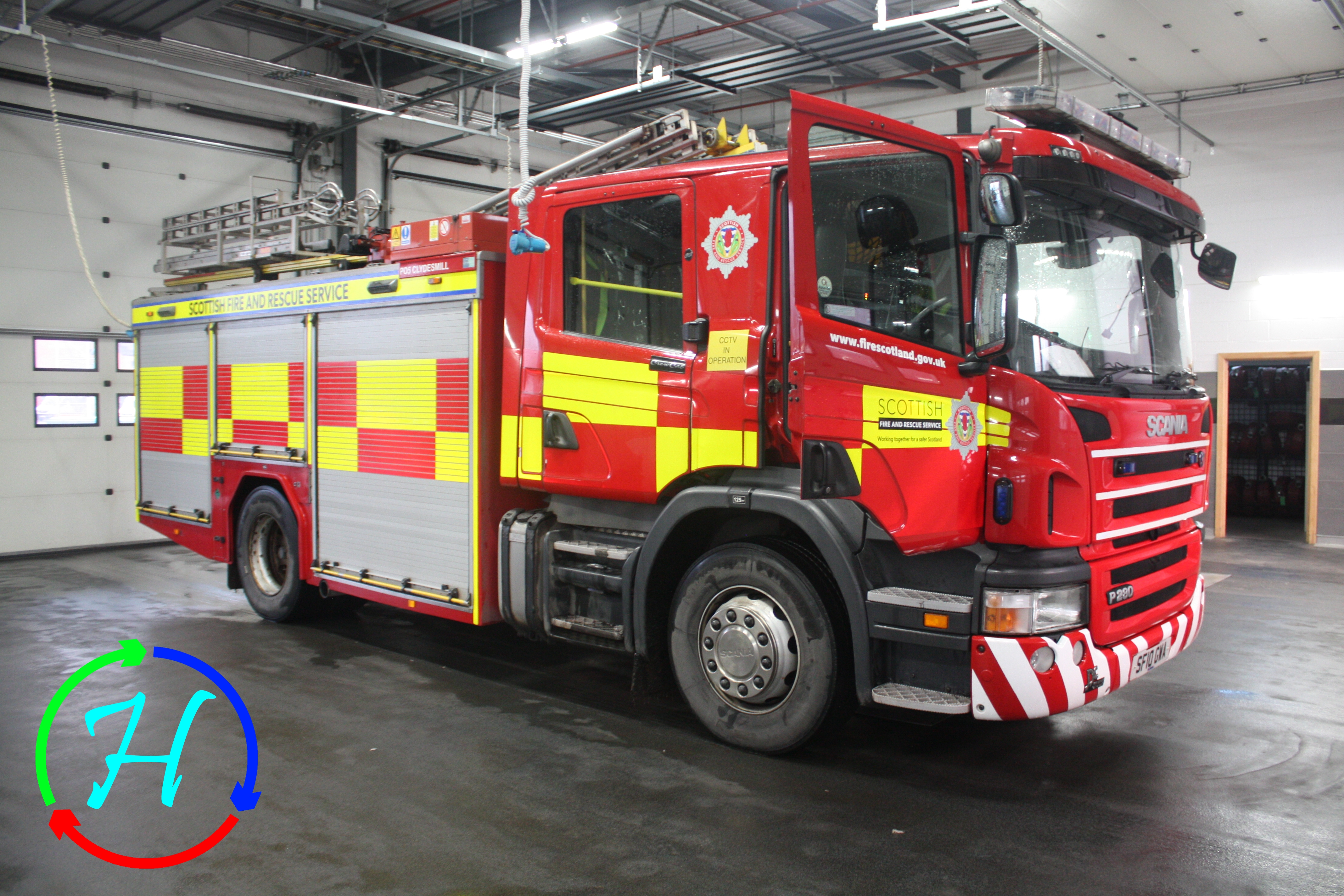
SF10 GWA - Scania P280 - Pump - P05A2
The secondary appliance at Clydesmill is a more converntial Scania pump, seen her ready to respond to any emergencies that come in!

The rear of the fire station, showing the bays allowing the appliances to drive right through, so the face the right direction ready to deploy to the next emergency!
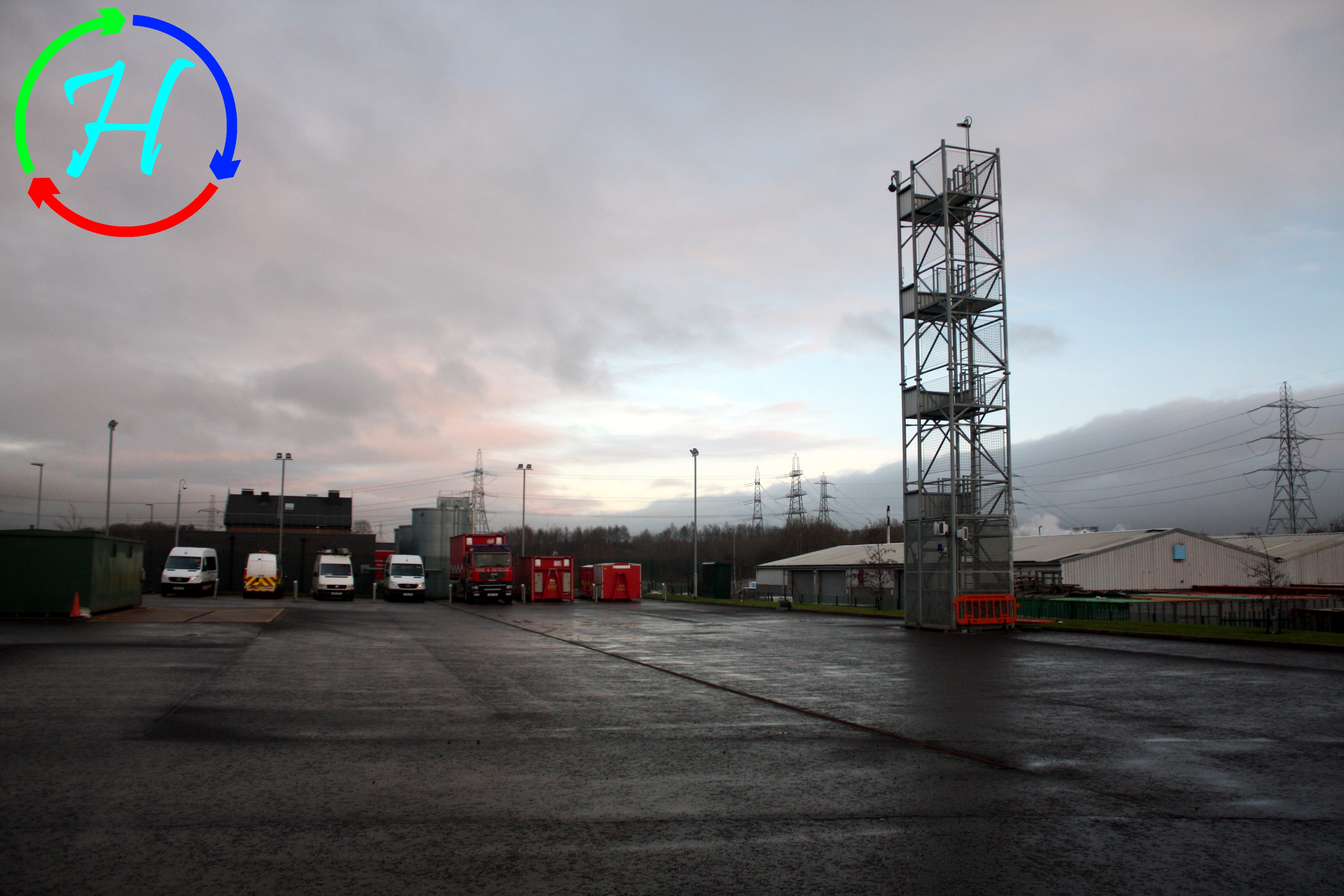
Looking the other direction at the rear of the station, with the sleek drill tower standing over the yard

KM59 OWZ - Vauxhall Movano - Support
One of the many support vehicles on site, parked up at the back of the fire station.

Clydesmill is also home to the Scottish Fire & Rescue Service College. This massive site is home to some truly amazing facilities! I did ask to go around the site, but there was noone who could take me on short notice.
This is the main building, home to classrooms and other administration and educational facilities.
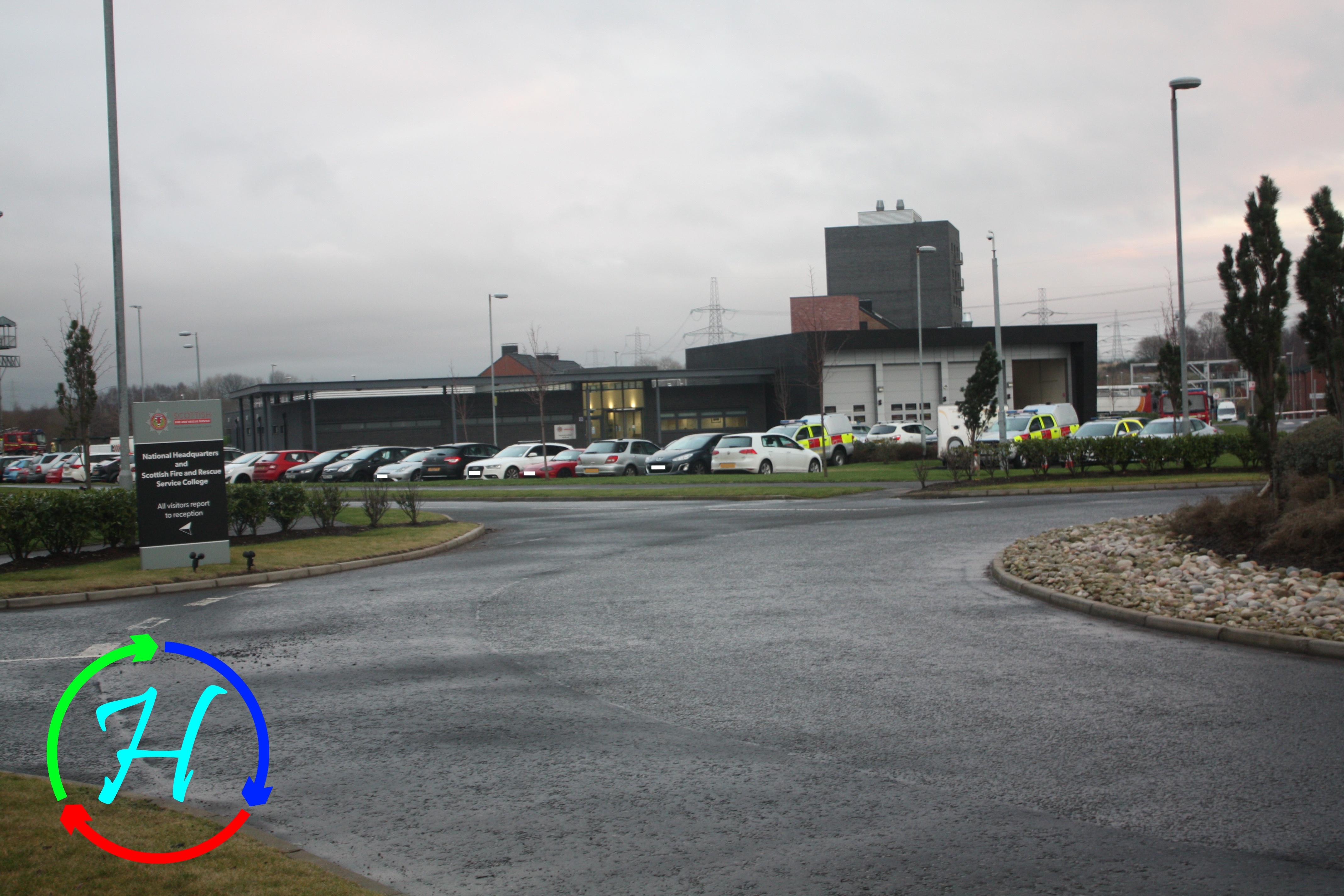
This is the mock fire station for the SFRS cadets to practice deploying to emergencies!
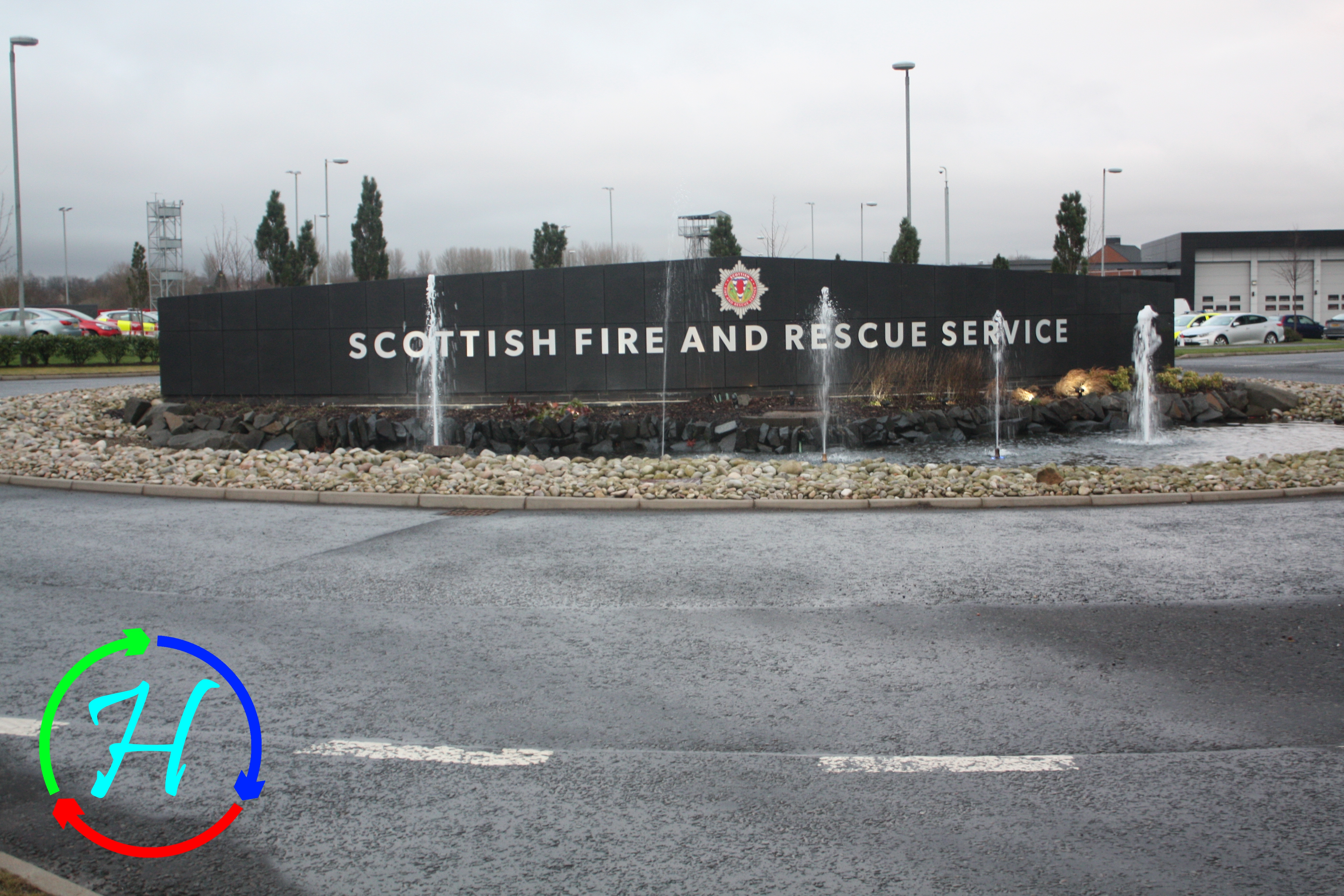
The lovely landscaping feature marking the entrance to the college!